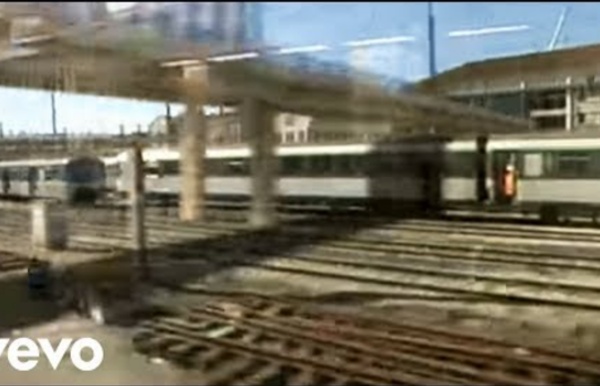



http://www.youtube.com/watch?v=0S43IwBF0uM
Related: PBJjohn locke » Blog Archive » visualizing sound in processing This was the final applet in motion. Using the minim library for processing, each waveform is generated in realtime as the two sounds play over eachother creating a pretty chaotic sound, but there are some instances of overlapping patterns where the mashup works pretty well. In the third version of the code, the boolean of the two waveforms is generated, producing a new way to visualize the waveforms. View the youtube video here, but I really need to figure out a way to add sound to the video, silence doesn’t do it justice.
The Chemical Brothers Un article de Wikipédia, l'encyclopédie libre. The Chemical Brothers Les Chemical Brothers en concert Débuts du groupe[modifier | modifier le code] C'est à la fac d'histoire de Manchester que Tom Rowlands et Ed Simons font connaissance en 1989. Peu après, ils commencent à mixer dans des clubs locaux réputés sous le nom de « The Dust Brothers ».
さくらのブログ リクエストされたページは表示できません。 サーバのアクセス権限がありません。 [ TOPへ ] (C)Copyright SAKURA Internet Inc. リクエストされたページは表示できません。 Official Home of The Chemical Brothers AfterEffects でモーショングラフィックを作る この記事は2010年より前に書かれたものです。諸々の事情で情報が正しくない可能性があります。自己責任でご覧ください。 前回の記事に続き、またまた難題にぶつかりました。 AfterEffects では Flash のような感覚でモーショングラフィックは作れないということです。モーショングラフィックの構成要素として挙げられるのが音楽との同期。 Project Eden In this post, I'll be describing in more detail how the CG Earth is constructed. The whole planet was broken down into several key components: land, water, clouds, atmosphere and an atmospheric "rim". The atmosphere has two components because it's not a true volumetric simulation, but a kind of hack ^^; Land Nothing fancy here that's not been done for decades. A simple sphere primitive with polar (spherical) UV projection so that the Blue Marble textures can be wrapped around it.
Night Lights 2012 - Flat map acquired April 18 - October 23, 2012download large image (776 KB, JPEG, 3600x1800) acquired April 18, 2012download GeoTIFF file (3 MB, TIFF, 3600x1800) acquired April 18, 2012download large image (7 MB, JPEG, 13500x6750) acquired April 18, 2012download GeoTIFF file (39 MB, TIFF, 13500x6750) NOAA Satellite Reveals New Views of Earth at Night Scientists unveiled today an unprecedented new look at our planet at night. A global composite image, constructed using cloud-free night images from a new NASA and National Oceanic and Atmospheric Administration (NOAA) satellite, shows the glow of natural and human-built phenomena across the planet in greater detail than ever before. This image of the continental United States at night is a composite assembled from data acquired by the Suomi NPP satellite in April and October 2012. The image was made possible by the satellite's "day-night band" of the Visible Infrared Imaging Radiometer Suite (VIIRS), which detects light in a range of wavelengths from green to near-infrared and uses filtering techniques to observe dim signals such as city lights, gas flares, auroras, wildfires and reflected moonlight.Credit: NASA Earth Observatory/NOAA NGDC› Larger image› High-resolution download and more information → [image-62][image-76] "The night is nowhere as dark as we might think," Miller said.
Time-Lapse Videos This clickable map organizes all of the existing time-lapse sequences into geographical regions. These videos are organized to both aid in searching for a desired area of the Earth, and to break down the volume of the existing time-lapse sequences. Each region below is separated by regions around the world, as well as links below the clickable map to the "Aurora Borealis and Australis" and "Special Videos". The newest release of time-lapse sequences will be posted just below these two sections. Topography Land topography is a digital image of the three-dimensional structure of the Earth's surface. Shading indicates changes in slope or elevation. The relief shading in this topographic map comes mostly from elevation data collected by space-based radars. A radar in space sends a pulse of radio waves toward the earth and measures the strength and length of time it takes a signal to bounce back. From this information, scientists can determine the height and shape of the features on the surface.